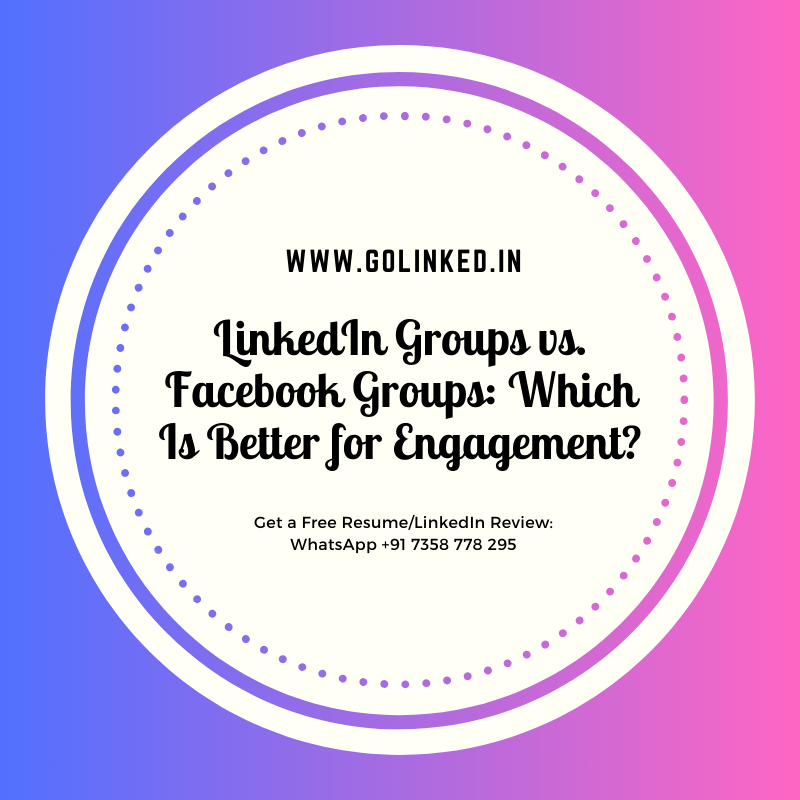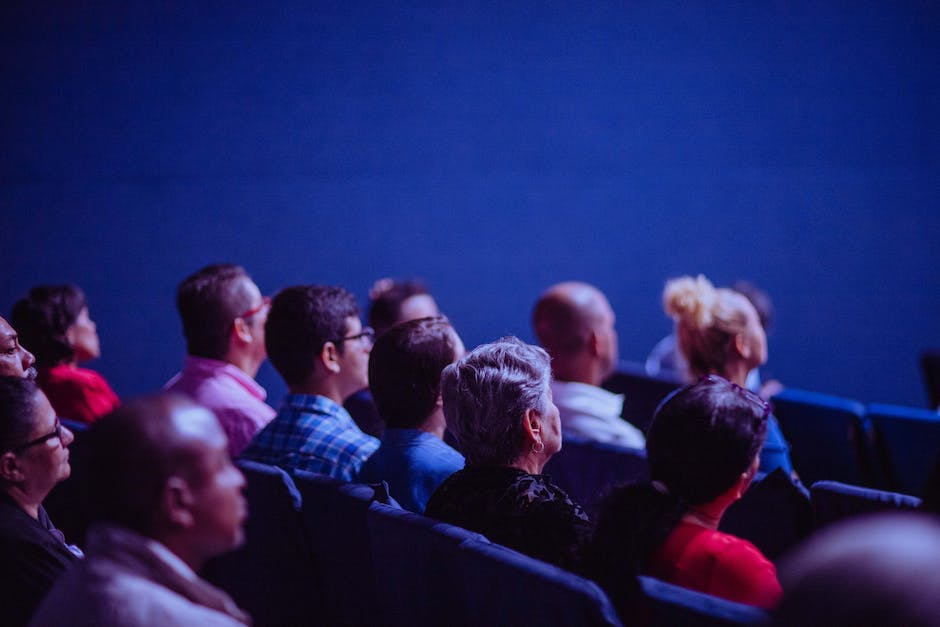LinkedIn Groups vs. Facebook Groups: Unlocking Engagement Potential
Introduction
LinkedIn Groups and Facebook Groups are both popular platforms for connecting with like-minded individuals and engaging in discussions. However, when it comes to determining which platform is better for engagement, there are several factors to consider. In this article, we will compare LinkedIn Groups and Facebook Groups, exploring their features, target audience, and overall effectiveness in fostering meaningful engagement. By examining these aspects, we aim to provide insights into which platform may be more suitable for your specific engagement goals.
Pros and Cons of LinkedIn Groups for Engagement
LinkedIn Groups have become a popular platform for professionals to connect, share ideas, and engage with like-minded individuals. With its focus on business and career development, LinkedIn offers a unique space for networking and collaboration. However, like any social media platform, LinkedIn Groups also have their pros and cons when it comes to engagement.
One of the major advantages of LinkedIn Groups is the quality of its members. Unlike Facebook Groups, which can be more casual and open to anyone, LinkedIn Groups attract professionals who are serious about their careers and industry. This means that the discussions and interactions in LinkedIn Groups tend to be more focused and relevant. If you are looking for meaningful engagement with professionals in your field, LinkedIn Groups can be a great place to start.
Another benefit of LinkedIn Groups is the ability to showcase your expertise. By actively participating in discussions and sharing valuable insights, you can establish yourself as a thought leader in your industry. This can lead to increased visibility, credibility, and even potential job opportunities. LinkedIn Groups provide a platform for professionals to share their knowledge and learn from others, making it a valuable resource for career growth.
LinkedIn Groups also offer a more professional and polished environment compared to Facebook Groups. The interface is clean and clutter-free, making it easier to navigate and find relevant discussions. Additionally, LinkedIn Groups have stricter rules and guidelines, ensuring that the content shared is of high quality and relevance. This can help maintain a positive and productive atmosphere for engagement.
However, LinkedIn Groups also have their limitations. One of the main drawbacks is the limited reach compared to Facebook Groups. While LinkedIn has a large user base, it is still primarily focused on professionals and may not have the same level of engagement as Facebook, which has a broader audience. This means that if you are looking for a wider range of perspectives and opinions, Facebook Groups might be a better option.
Another disadvantage of LinkedIn Groups is the lack of personal connections. While LinkedIn is a professional networking platform, it can sometimes feel impersonal and transactional. The focus
Advantages and Disadvantages of Facebook Groups for Engagement
When it comes to engaging with like-minded individuals and building a community, Facebook Groups have long been a popular choice. With their user-friendly interface and vast user base, it’s no wonder why so many people turn to Facebook for their group needs. However, like any platform, Facebook Groups have their advantages and disadvantages when it comes to engagement.
One of the biggest advantages of Facebook Groups is their sheer size. With over 2.8 billion monthly active users, Facebook provides a massive pool of potential group members. This means that no matter what niche or interest you have, chances are there’s already a group on Facebook dedicated to it. This large user base also means that there’s a higher chance of finding active and engaged members within your group.
Another advantage of Facebook Groups is the ease of use. The platform is designed to be user-friendly, making it simple for both group admins and members to navigate and interact with the group. From posting updates and sharing content to commenting and liking posts, Facebook Groups make it easy for members to engage with each other and stay connected.
Facebook Groups also offer a variety of features that can enhance engagement. For example, group admins have the ability to create polls, events, and even sell products directly within the group. These features not only encourage interaction but also provide opportunities for members to connect on a deeper level.
However, despite these advantages, Facebook Groups also have their fair share of disadvantages when it comes to engagement. One of the biggest drawbacks is the potential for spam and irrelevant content. With such a large user base, it’s not uncommon for groups to attract spammers and individuals who are not genuinely interested in the group’s topic. This can lead to a decrease in engagement and make it more difficult for members to find valuable discussions and content.
Another disadvantage of Facebook Groups is the lack of privacy. While some groups may be closed or secret, the majority of groups are public or require approval to join. This means that anyone can see the content posted within the group
A Comparative Analysis of Engagement in LinkedIn Groups vs. Facebook Groups
LinkedIn Groups vs. Facebook Groups: Which Is Better for Engagement?
When it comes to online communities, LinkedIn and Facebook are two of the biggest players in the game. Both platforms offer groups as a way for users to connect with like-minded individuals, share ideas, and engage in meaningful discussions. But which one is better for engagement? Let’s take a closer look at the features and benefits of LinkedIn Groups and Facebook Groups to find out.
LinkedIn Groups have long been known as a hub for professionals looking to network and share industry-specific knowledge. With over 700 million users, LinkedIn is a powerhouse when it comes to connecting professionals from all walks of life. LinkedIn Groups allow users to join communities centered around specific topics, industries, or interests. This targeted approach ensures that the discussions within these groups are relevant and valuable to its members.
On the other hand, Facebook Groups boast a staggering 1.8 billion users, making it the largest social media platform in the world. Facebook Groups are more diverse in nature, catering to a wide range of interests and hobbies. Whether you’re a fan of cooking, photography, or even knitting, there’s a Facebook Group out there for you. The sheer size and diversity of Facebook Groups mean that you’re likely to find a community that aligns with your interests.
When it comes to engagement, both LinkedIn Groups and Facebook Groups offer unique advantages. LinkedIn Groups tend to foster more professional discussions, with members sharing industry insights, best practices, and job opportunities. The professional nature of LinkedIn Groups means that the conversations are often more focused and informative. If you’re looking to connect with industry experts or gain valuable insights into your field, LinkedIn Groups are the way to go.
On the other hand, Facebook Groups excel in creating a sense of community and fostering personal connections. The more casual nature of Facebook Groups allows members to share personal stories, ask for advice, and support one another. Whether you’re a new parent seeking parenting tips or a traveler looking for recommendations, Facebook Groups provide
Q&A
1. Which platform, LinkedIn Groups or Facebook Groups, is better for engagement?
LinkedIn Groups generally offer better engagement for professional networking and industry-specific discussions.
2. What are the advantages of LinkedIn Groups over Facebook Groups in terms of engagement?
LinkedIn Groups provide a more focused and professional environment, allowing for targeted discussions and networking opportunities.
3. Are there any benefits to using Facebook Groups over LinkedIn Groups for engagement?
Facebook Groups can be advantageous for more casual and social interactions, as well as reaching a broader audience beyond professional connections.



